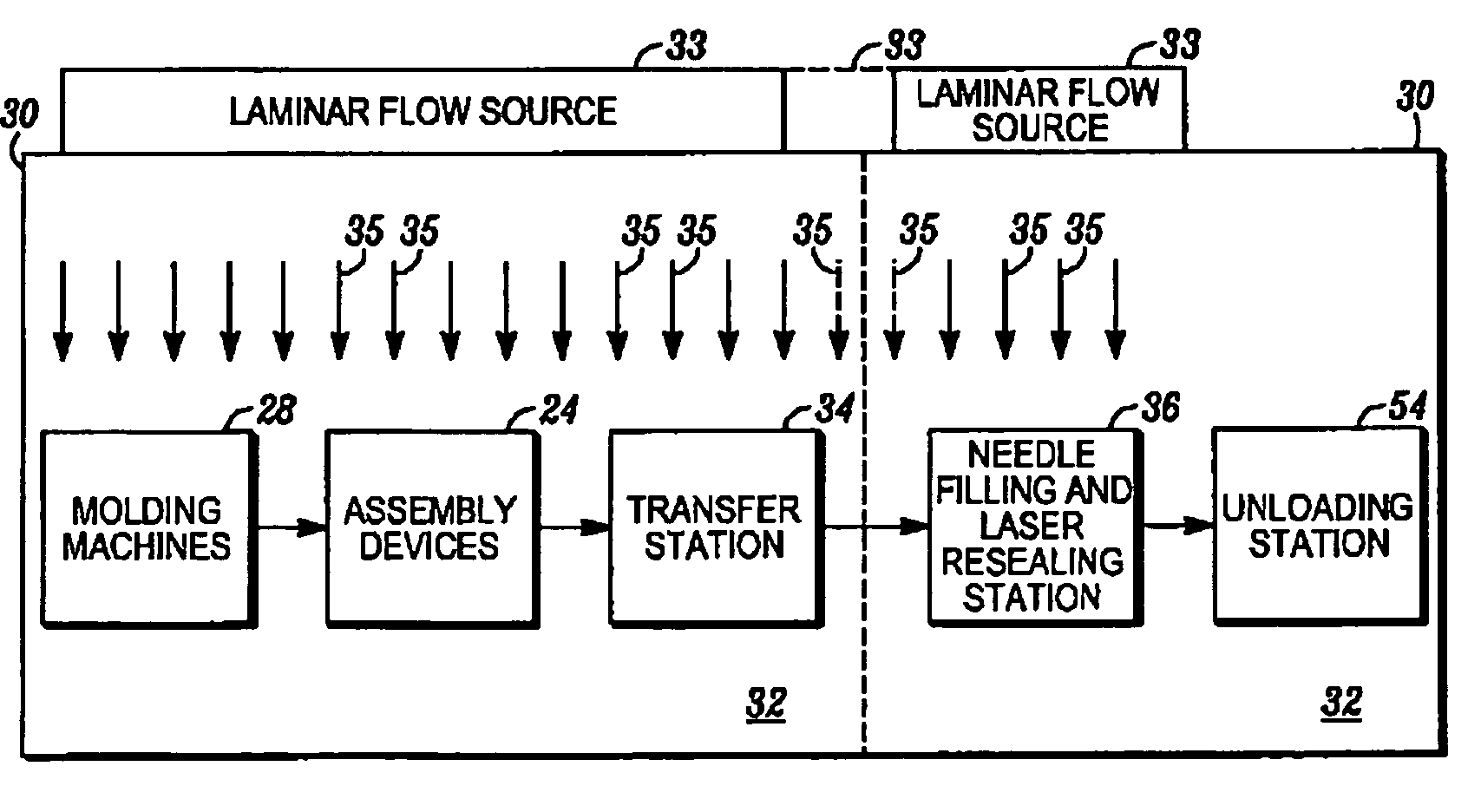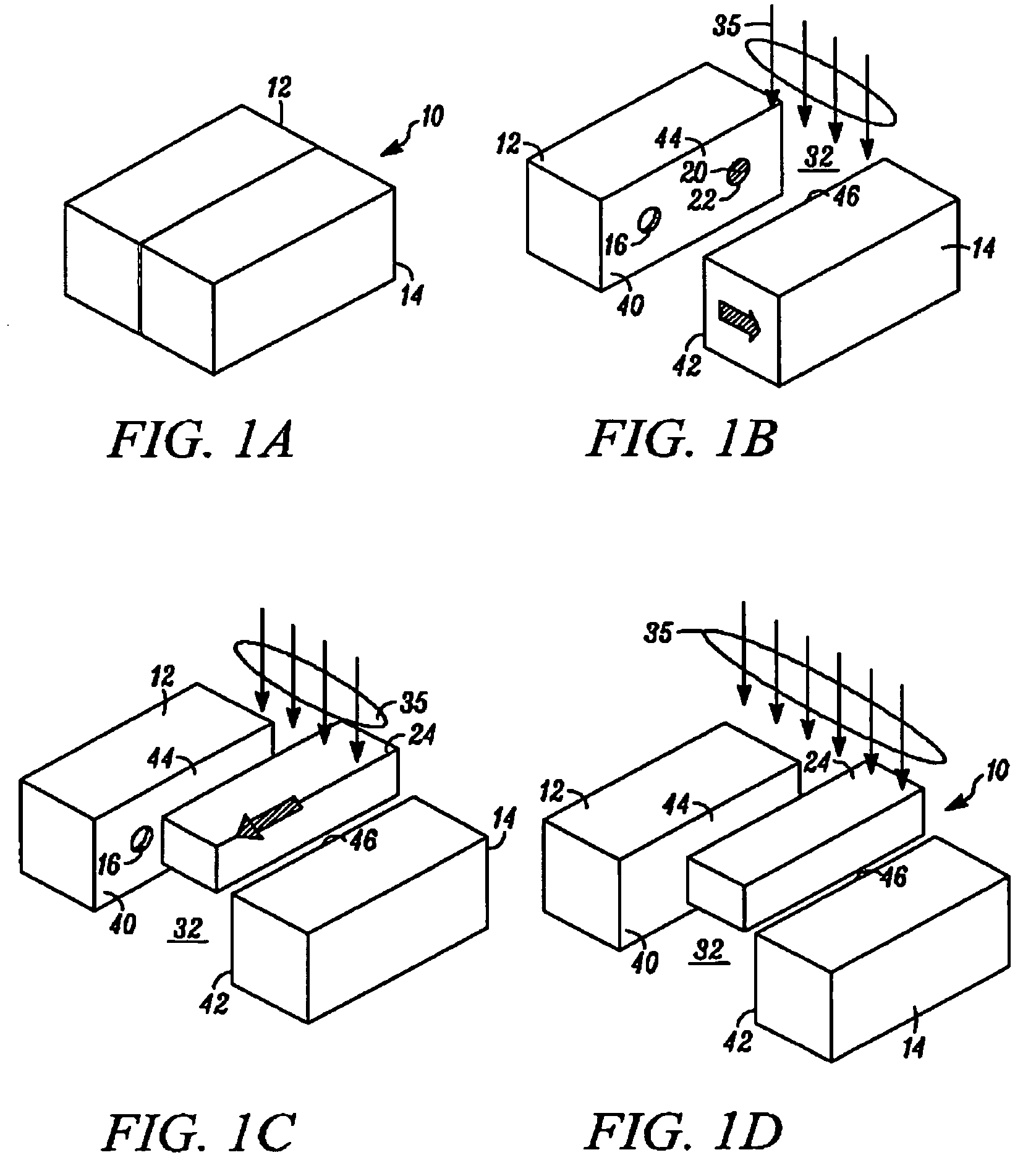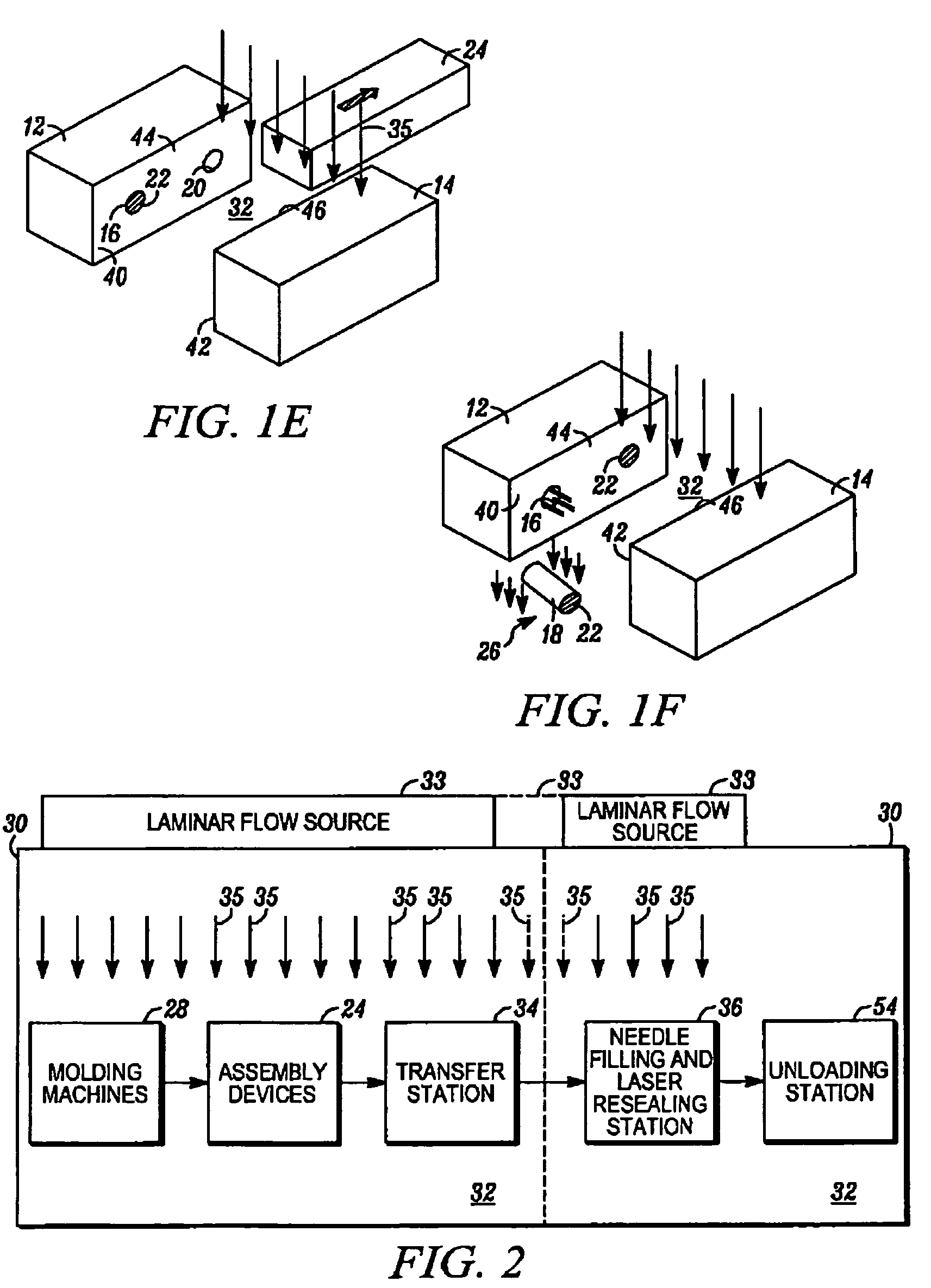Sterile de-molding apparatus and method
a container and de-molding technology, applied in the direction of liquid handling, packaging, packaging goods, etc., can solve the problems of more defectively filled containers than otherwise desired, time-consuming filling process, and high cost of processes and equipment, so as to maintain the sterility of the container
- Summary
- Abstract
- Description
- Claims
- Application Information
AI Technical Summary
Benefits of technology
Problems solved by technology
Method used
Image
Examples
Embodiment Construction
[0034]In FIGS. 1A through 1F, an apparatus embodying the present invention is indicated generally by the reference numeral 10. The apparatus 10 comprises a mold including a first mold half or portion 12, and a second mold half or portion 14. As can be seen, at least one of the first and second mold portions 12 and 14 is movable relative to the other in a manner known to those of ordinary skill in the pertinent art between a closed position for molding the container parts therein, and an open position for de-molding or releasing the molded container parts therefrom. The first and second mold portions 12 and 14 cooperate to define a first mold cavity 16 that is shaped to form the container body 18, and a second mold cavity 20 that is shaped to form the stopper 22. Although only one of each mold cavity is illustrated, the apparatus 10 may define a plurality of such mold cavities in a manner known to those of ordinary skill in the pertinent art in order to increase production throughput...
PUM
| Property | Measurement | Unit |
|---|---|---|
| temperature | aaaaa | aaaaa |
| temperature | aaaaa | aaaaa |
| temperature | aaaaa | aaaaa |
Abstract
Description
Claims
Application Information
 Login to View More
Login to View More - R&D
- Intellectual Property
- Life Sciences
- Materials
- Tech Scout
- Unparalleled Data Quality
- Higher Quality Content
- 60% Fewer Hallucinations
Browse by: Latest US Patents, China's latest patents, Technical Efficacy Thesaurus, Application Domain, Technology Topic, Popular Technical Reports.
© 2025 PatSnap. All rights reserved.Legal|Privacy policy|Modern Slavery Act Transparency Statement|Sitemap|About US| Contact US: help@patsnap.com



